Abarth 500 595 695 vs Mazda MX-30 – Performance, range & efficiency compared
Everyday use, family trips or long-distance drives – here’s where the differences show.
Discover whether Abarth 500 595 695 or Mazda MX-30 fits your lifestyle better.
Costs and Efficiency:
Looking at overall running costs, both models reveal some interesting differences in everyday economy.
Mazda MX-30 has a slight advantage in terms of price – it starts at 30800 £, while the Abarth 500 595 695 costs 32600 £. That’s a price difference of around 1714 £.
In terms of energy consumption, the advantage goes to the Abarth 500 595 695: with 17.10 kWh per 100 km, it’s hardly perceptible more efficient than the Mazda MX-30 with 18.30 kWh. That’s a difference of about 1.20 kWh.
As for range, the Abarth 500 595 695 performs significantly better – achieving up to 265 km, about 180 km more than the Mazda MX-30.
Engine and Performance:
Under the bonnet, it becomes clear which model is tuned for sportiness and which one takes the lead when you hit the accelerator.
When it comes to engine power, the Mazda MX-30 has a slight edge – offering 170 HP compared to 155 HP. That’s roughly 15 HP more horsepower.
In acceleration from 0 to 100 km/h, the Abarth 500 595 695 is noticeable quicker – completing the sprint in 7 s, while the Mazda MX-30 takes 9.10 s. That’s about 2.10 s faster.
In terms of top speed, the Abarth 500 595 695 performs hardly perceptible better – reaching 155 km/h, while the Mazda MX-30 tops out at 140 km/h. The difference is around 15 km/h.
Space and Everyday Use:
Cabin size, boot volume and payload all play a role in everyday practicality. Here, comfort and flexibility make the difference.
Seats: Mazda MX-30 offers somewhat more seating capacity – 5 vs 4.
In curb weight, Abarth 500 595 695 is evident lighter – 1410 kg compared to 1849 kg. The difference is around 439 kg.
In terms of boot space, the Mazda MX-30 offers significantly more room – 350 L compared to 185 L. That’s a difference of about 165 L.
In maximum load capacity, the Mazda MX-30 performs significantly better – up to 1155 L, which is about 605 L more than the Abarth 500 595 695.
When it comes to payload, Mazda MX-30 minimal takes the win – 402 kg compared to 385 kg. That’s a difference of about 17 kg.
Who comes out on top?
Overall, the Mazda MX-30 shows itself to be edges out slightly and secures the title of DriveDuel Champion.
It convinces with the more balanced overall package and proves to be the more versatile choice for everyday use.
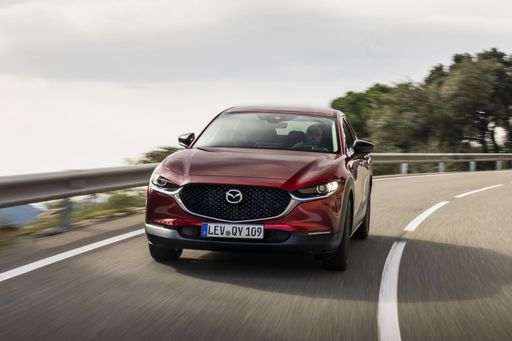 @ Mazda Motor Corporation
@ Mazda Motor Corporation
Mazda MX-30
Abarth 500 595 695
The Abarth 500, particularly in its 595 and 695 renditions, captures the spirit of Italian motoring with its compact yet aggressive design. Known for its lively performance and distinctive styling, this little powerhouse is a joy to drive, offering an engaging experience that appeals to enthusiasts. With its rich motorsport heritage, the Abarth 500 embodies the essence of fun and excitement on both the streets and the race track.
details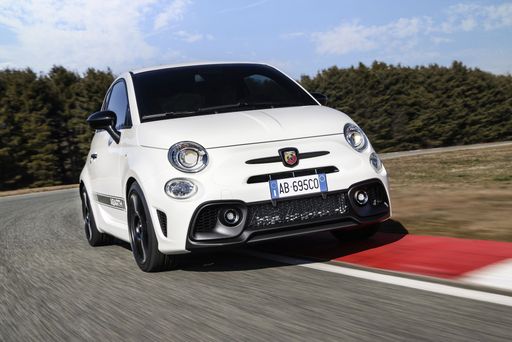 @ Abarth / Stellantis Media
@ Abarth / Stellantis Media
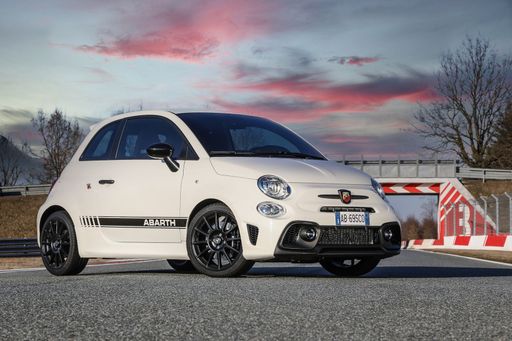 @ Abarth / Stellantis Media
@ Abarth / Stellantis Media
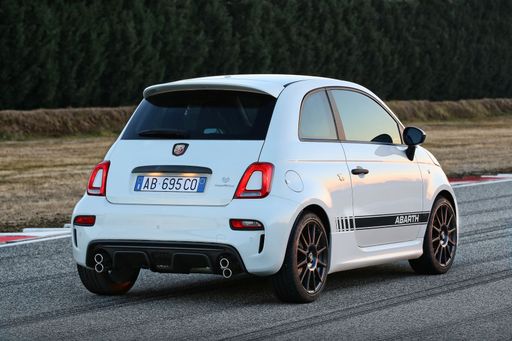 @ Abarth / Stellantis Media
@ Abarth / Stellantis Media
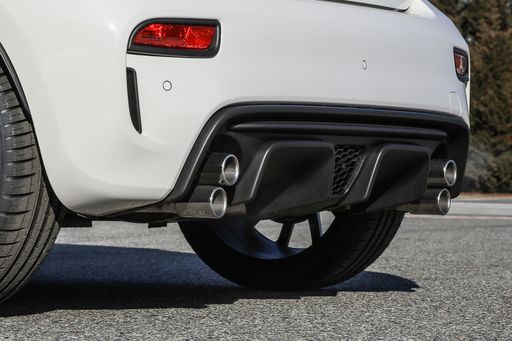 @ Abarth / Stellantis Media
@ Abarth / Stellantis Media
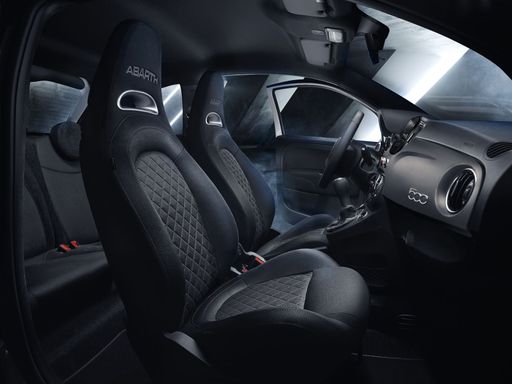 @ Abarth / Stellantis Media
@ Abarth / Stellantis Media
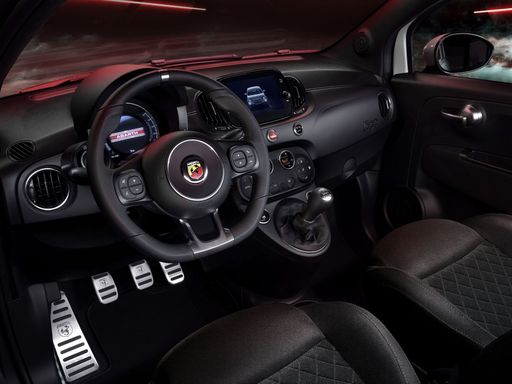 @ Abarth / Stellantis Media
@ Abarth / Stellantis Media
Mazda MX-30
The Mazda MX-30 is a compact crossover that combines unique design with an environmentally conscious approach. Its distinct exterior features a coupe-like silhouette and freestyle doors that offer practicality and style. Inside, the cabin boasts sustainable materials, creating a harmonious blend of modern aesthetics and eco-friendly innovation.
details @ Mazda Motor Corporation
@ Mazda Motor Corporation
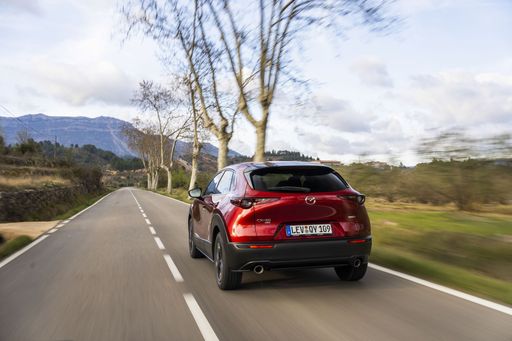 @ Mazda Motor Corporation
@ Mazda Motor Corporation
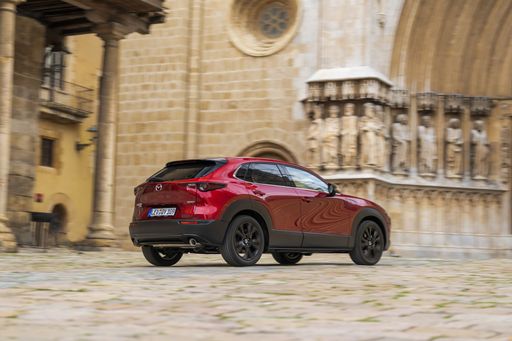 @ Mazda Motor Corporation
@ Mazda Motor Corporation
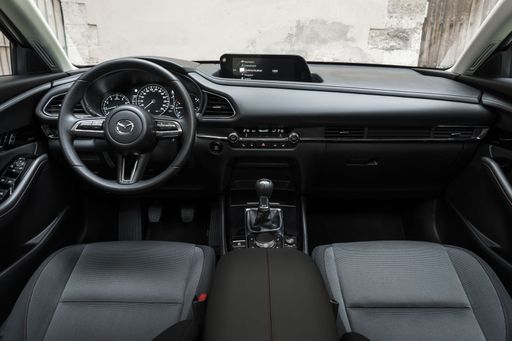 @ Mazda Motor Corporation
@ Mazda Motor Corporation
 @ Abarth / Stellantis Media
@ Abarth / Stellantis Media
|
 @ Mazda Motor Corporation
@ Mazda Motor Corporation
|
|
|
|
Costs and Consumption |
|
|---|---|
|
Price
32600 - 39400 £
|
Price
30800 - 37100 £
|
|
Consumption L/100km
-
|
Consumption L/100km
-
|
|
Consumption kWh/100km
17.1 - 18.8 kWh
|
Consumption kWh/100km
18.30 kWh
|
|
Electric Range
242 - 265 km
|
Electric Range
85 km
|
|
Battery Capacity
37.80 kWh
|
Battery Capacity
-
|
|
co2
0 g/km
|
co2
22 g/km
|
|
Fuel tank capacity
-
|
Fuel tank capacity
-
|
Dimensions and Body |
|
|---|---|
|
Body Type
Hatchback
|
Body Type
SUV
|
|
Seats
4
|
Seats
5
|
|
Doors
3
|
Doors
5
|
|
Curb weight
1410 - 1435 kg
|
Curb weight
1849 kg
|
|
Trunk capacity
185 L
|
Trunk capacity
332 - 350 L
|
|
Length
3673 mm
|
Length
4395 mm
|
|
Width
1682 mm
|
Width
1848 mm
|
|
Height
1518 mm
|
Height
1555 mm
|
|
Max trunk capacity
550 L
|
Max trunk capacity
1137 - 1155 L
|
|
Payload
370 - 385 kg
|
Payload
402 kg
|
Engine and Performance |
|
|---|---|
|
Engine Type
Electric
|
Engine Type
Plugin Hybrid
|
|
Transmission
Automatic
|
Transmission
Automatic
|
|
Transmission Detail
-
|
Transmission Detail
Reduction Gearbox
|
|
Drive Type
Front-Wheel Drive
|
Drive Type
Front-Wheel Drive
|
|
Power HP
155 HP
|
Power HP
170 HP
|
|
Acceleration 0-100km/h
7 s
|
Acceleration 0-100km/h
9.10 s
|
|
Max Speed
155 km/h
|
Max Speed
140 km/h
|
|
Torque
235 Nm
|
Torque
-
|
|
Number of Cylinders
-
|
Number of Cylinders
-
|
|
Power kW
114 kW
|
Power kW
125 kW
|
|
Engine capacity
-
|
Engine capacity
830 cm3
|
General |
|
|---|---|
|
Model Year
2023
|
Model Year
2025
|
|
CO2 Efficiency Class
A
|
CO2 Efficiency Class
B
|
|
Brand
Abarth
|
Brand
Mazda
|
Is the Abarth 500 595 695 offered with different drivetrains?
The Abarth 500 595 695 is offered with Front-Wheel Drive.
The prices and data displayed are estimates based on German list prices and may vary by country. This information is not legally binding.
